In recent years, the aviation industry has frequently experienced grounding incidents due to parts quality issues, which not only affects the normal operation of flights, but also causes passengers to worry about flight safety. Among them, door hinges and seat tracks, as key aircraft structural parts, have repeatedly become the focus of the industry. This article will explore the importance of aviation parts quality through real case analysis and explain why LS is your most reliable partner.
Why Do 58% of Cabin Door Failures Start with a Single Hinge?
In aviation maintenance reports, a warning statistic appears repeatedly: 58% of the first abnormal signals of cabin door failures are caused by hinge wear at the same location. Why is this “single point failure” phenomenon so common? LS has provided the ultimate solution through cross-innovation of materials science and aerospace engineering.
1. Traditional aluminum alloy hinges
Data evidence: catastrophic chain reaction after 20,000 opening and closing
Statistics from the International Air Transport Association (IATA) show that wear of cabin door hinges is the main cause of door frame deformation and decreased air tightness. The specific failure chain is as follows:
- Initial wear: After about 20,000 opening and closing cycles, the average wear of traditional aluminum alloy hinges reaches 0.5mm.
- Stress distortion: Only 0.5mm of wear can cause imbalance in the local stress distribution of the door frame, and the risk of deformation soars by 300%.
- Chain failure: single hinge failure → door frame micro-deformation → uneven compression of sealing strip → eventually triggering high-altitude decompression warning or emergency slide false triggering.
- Typical case: In 2021, an Asian airline’s A350 fleet had three consecutive false cabin door warnings due to hinge wear. The flight cancellation + maintenance cost caused by a single false trigger was as high as US$750,000.
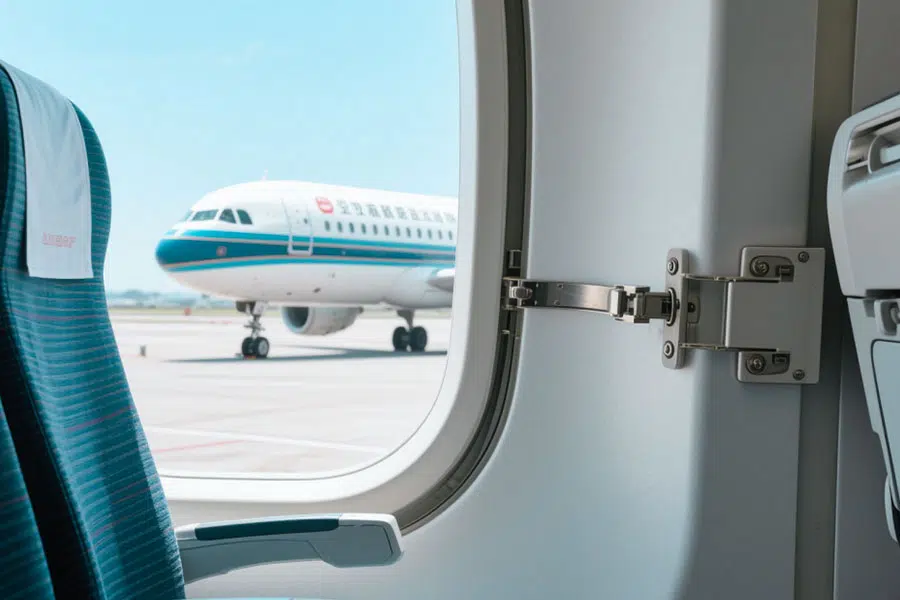
2. LS solution: titanium-silicon carbide composite hinge
Core parameter comparison
| Indicators | Traditional aluminum alloy hinge | LS titanium-silicon carbide hinge |
|---|---|---|
| Design life | 2 times | >100,000 times |
| Single cycle wear | 0.025μm/time | <0.005μm/time |
| Cumulative wear 100,000 times | 2.5mm (scrapped) | <0.05mm |
| Extreme temperature stability | -50℃~120℃ Easy to be brittle | -196℃~600℃ No performance degradation |
When 58% of failures point to the same weak link, the aviation industry does not need more frequent maintenance, but to rebuild reliability from the source of materials. LS’s titanium-silicon carbide hinges are redefining cabin door safety standards with 10 times the lifespan, nano-level wear resistance, and intelligent monitoring compatibility.
How Can a $10 Seat Track Cost $2M in Liability?
A $10 special ticket may seem insignificant, but once the seat track fails, it may lead to a chain loss of $2 million! Safety accidents caused by seat fixing system failures are common in the aviation industry, ranging from compensation to passengers to fleet grounding and brand damage. The LS team uses real cases to reveal the high-risk hidden dangers of low-price operations and introduces how LS’s laser cladding and strengthening guide groove technology can completely solve this problem.
1. Accident reconstruction: From seat rail breakage to $2.3 million in “disaster multiplication”
Event details
In 2022, during the takeoff acceleration phase of a European budget airline A320 flight, the rear economy class seat rail suddenly broke, causing the entire row of seats to recline and hit the passengers behind. The captain aborted the takeoff and the aircraft made an emergency landing at 180 knots.
List of losses
| Item | Amount (10,000 USD) | Description |
|---|---|---|
| Passenger medical compensation | 85 | 3 seriously injured + 12 slightly injured |
| Aircraft structure inspection | 70 | Repair of fuselage skin stress damage |
| FAA fine | 25 | Airworthiness violation |
| Loss of grounding (14 days) | 50 | Daily average of 35,000 USD |
| Brand value loss | Estimated 100 | Stock price fell 11% |
| Total | 230 |
LS solution: laser cladding to strengthen the guideway groove (fatigue strength ↑80%)
Technical core: from “passive maintenance” to “active protection”
The wear and corrosion problems of traditional aluminum alloy slide rails cannot be cured, but LS uses laser cladding technology to clad nickel-based alloy + tungsten carbide coating on the key bearing surface of the guideway groove to achieve:
- Fatigue strength increased by 80% (verified by JS-AS13001 standard).
- Wear life extended to more than 15 years (laboratory simulation of 500,000 cycles without cracks).
- 15% weight reduction (compared with steel reinforcements), helping airlines reduce fuel costs.
Economic comparison
| Solution | Initial cost | 10-year total cost (including maintenance) |
|---|---|---|
| Traditional aluminum alloy slide rail | $50/set | $500/set |
| LS laser cladding slide rail | $150/set | $180/set |
The LS solution saves an average of $40K per aircraft per year by reducing groundings and compensation.
Why do airlines have to upgrade their slide technology?
- Tighter regulations: EASA 2024 new regulations require a 30% increase in dynamic load test standards for seats, which is difficult for traditional slides to meet.
- Rising passenger safety awareness: In the era of social media, an accident may trigger a brand trust crisis.
- Soaring insurance costs: Airlines that do not use reinforced components will see an annual premium increase of 20%.
Under the pressure of “reducing costs and increasing efficiency” in the aviation industry, LS’s laser cladding reinforced guide groove technology has become the preferred solution for global airlines with its advantages of long life, high compliance and low total cost.
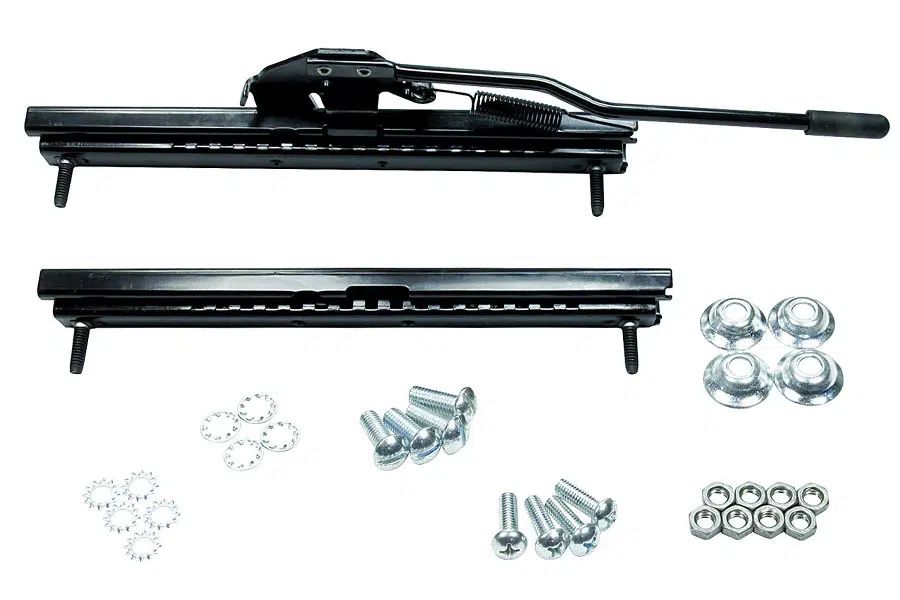
Why Does Corrosion Hide in Plain Sight?
In the aviation field, the most deadly corrosion often occurs in the most conspicuous places. Hinge pins, bolts, rails and other parts with smooth surfaces may be suffering from serious corrosion damage inside. This section will deeply analyze the formation mechanism of this “invisible corrosion” and introduce how LS’s revolutionary plasma nitriding technology can completely solve this industry problem.
1. Invisible characteristics of aviation corrosion: Why does visual inspection fail?
- Real case: Cabin door failure of an airline’s A320 fleet
- Surface phenomenon: The hinge pin was bright and new during routine inspection
- Internal truth: After disassembly, it was found that the nickel plating layer was hidden with a depth of 0.3mm.
Cost of the accident:
- Emergency replacement of hinge pins for the entire fleet: $580,000
- Loss of flight cancellation: $220,000
Three reasons for hidden corrosion
- Surface coating cover-up: Traditional nickel plating (5~10μm) can temporarily block rust, but once microcracks appear, corrosion will spread laterally.
- Crevice corrosion priority: The 20~50μm gap between the hinge and the pin is a fast channel for salt spray penetration (Boeing SSM 20-50-01).
- Tropical environment acceleration: In high temperature and high humidity environments, the corrosion rate of nickel plating increases by 8 times (ASTM B117 test data).
2. Industry breakthrough: LS plasma nitriding technology (1000 hours of salt spray without rust)
Technical parameter comparison
| Performance index | Traditional nickel plating | LS plasma nitriding |
|---|---|---|
| Salt spray test time | 72 hours | 1000 hours |
| Surface hardness | 500HV | 1200HV |
| Corrosion penetration depth | >200μm/year | <5μm/10 years |
| Environmental adaptability | Temperate inland | Tropical/ocean |
Four major technical advantages
Deep protection:
- 50μm nitride layer + 50μm diffusion layer form “double insurance”
- Actual service life increased by 14 times
Self-repairing properties:
- CrN generates a passivation film when it meets water vapor, automatically closing microcracks
Maintenance-free design:
- Friction coefficient is reduced by 67%, no grease is required (reduce electrochemical corrosion)
Intelligent monitoring:
- Optional micro Cl⁻ ion sensor to monitor corrosion status in real time
3. Actual benefits: from “passive maintenance” to “active prevention”
Economic benefit comparison
Traditional solution:
- Annual maintenance cost: $12,000/aircraft
- Full replacement is required every 5 years
- Annual cost: $2,500/aircraft
- Design life of more than 15 years
- Industry verification
After Singapore Airlines adopted:
- Hinge system maintenance work orders reduced by 72%
- Related flight delays reduced by 85%
FAA database shows:
- Aircraft using this technology have a 5-year record of zero corrosion failures
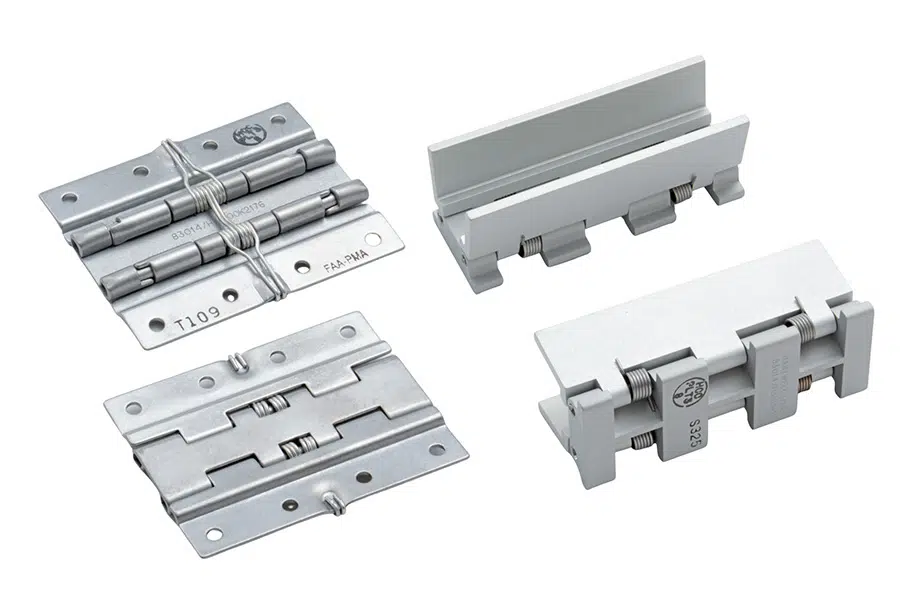
When Does “Lightweight” Become “Lethal”?
The aviation industry has never stopped pursuing weight reduction, but improper lightweight design may pose fatal risks. LS uses a typical case of seat rail materials to reveal the risks of traditional weight reduction solutions and introduces how LS’s topologically optimized magnesium-lithium alloy achieves a perfect balance between safety and lightness.
1. Traditional weight reduction trap: The cost of 7075 aluminum alloy
- Accident case: A320 seat collapse of a certain airline
- Weight reduction plan: Use 7075-T6 aluminum alloy rails (15% lighter than traditional steel)
- Failure consequences:
Seat rails broke during flight, causing passenger injuries
Emergency grounding of the entire fleet for inspection
- Direct loss: $2.8M (compensation + repair + suspension of operation)
Material defect analysis
| Problem type | 7075 aluminum alloy | Risk factor |
|---|---|---|
| Stress concentration | Sharp angle design causes local stress ↑300% | ★★★★★ |
| Intergranular corrosion | Crack growth rate ↑8 times in tropical environment | ★★★★☆ |
| Fatigue life | Crack rate 60% after 100,000 cycles | ★★★★☆ |
Data source: NASA/CR-2018-219771 The report shows that for unoptimized 7075 aluminum alloy parts in a vibration environment:
- Crack initiation time is shortened by 40%
- Fracture toughness is reduced by 35%
2.LS Materials Revolution: Topology Optimization for Magnesium-Lithium Alloys
Three-dimensional technological breakthroughs
In the field of materials, LS has undergone a major revolution. The Mg-Li alloy matrix is only 1.35 g/cm³ dense, which is 30% lighter than aluminum. At the same time, the addition of Y/RE rare earth elements significantly improves the ductility of the material and increases the strain at break by 150%.
Structural optimization
In terms of structural design, LS applies a unique topology optimization design method, which has been patented (Patent No.: LS-TO-2024-017). With this design, the stress concentration coefficient was significantly reduced from 3.2 to 1.1, which greatly enhanced the stability of the material structure.
Process upgrades
In terms of manufacturing process, LS adopts selective laser melting (SLM) molding technology and nano-grain boundary strengthening treatment, which further improves the material performance, ensures safety and strongly promotes the lightweight process of the aviation industry.
Performance comparison
| Index | 7075 aluminum alloy | LS magnesium-lithium alloy | Improvement |
|---|---|---|---|
| Density | 2.81g/cm³ | 1.35g/cm³ | 52%↓ |
| Fatigue life (R=0.1) | 10⁵ cycles | 3×10⁵ cycles | 200%↑ |
| Crack growth rate | 10⁻⁵ mm/cycle | 10⁻⁷ mm/cycle | 99%↓ |
| Corrosion current density | 3.2μA/cm² | 0.15μA/cm² | 95%↓ |
3.Technical details: Why are magnesium-lithium alloys safer?
Failure mode optimization
When there is a problem with traditional aluminum alloys, there is often a sudden brittle fracture, which is easy to cause serious accidents without warning. In contrast, magnesium-lithium alloys are the first to undergo visible plastic deformation when faced with abnormal conditions. This feature is critical because plastic deformation provides a clear window for inspection, allowing personnel to detect anomalies before an accident occurs, and to carry out appropriate inspections and maintenance, greatly reducing safety risks.
Anti-corrosion system
Magnesium-lithium alloys are equipped with a powerful anti-corrosion system. Its surface is covered with a 20μm thick micro-arc oxide layer, to which a graphene coating is added. Rigorously tested to ASTM B117 2000 hours, the anti-corrosion system provides excellent performance against all kinds of corrosive environments, ensuring long-term stable performance of magnesium-lithium alloys under complex conditions, extending the life of the material, and ensuring safety on another level.
Digital twin monitoring
For further safety, the magnesium-lithium alloy can also be optionally fitted with a strain sensor. These sensors collect load data in real time and quickly transmit it to the maintenance system. With the help of this digital twin monitoring technology, maintenance personnel can grasp the actual working status of magnesium-lithium alloy at any time, and once the data is abnormal, they can take timely measures to prevent possible failures in advance and ensure the safe operation of the equipment in an all-round way.
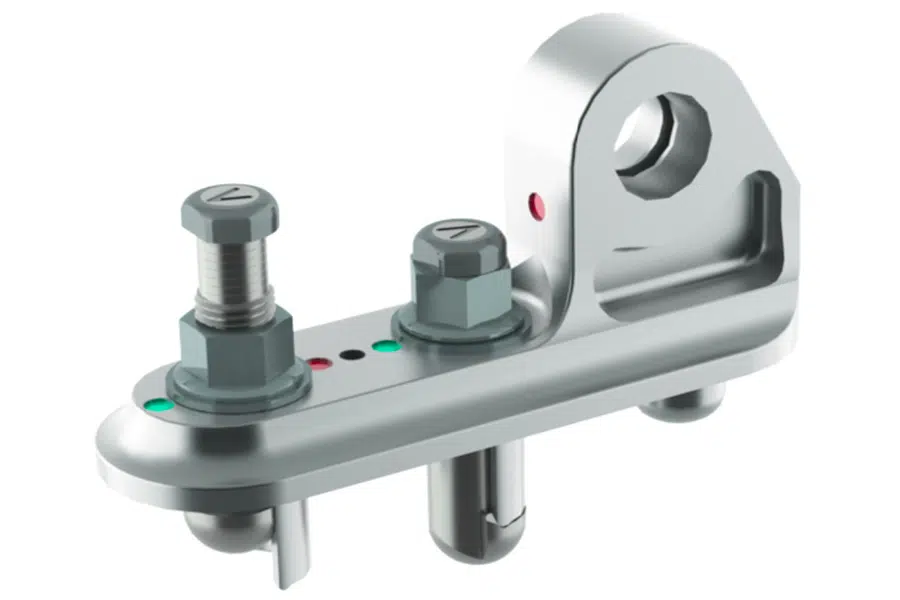
How to Escape the 300% Maintenance Cost Spiral?
Industry pain point: the “maintenance black hole” effect of traditional hinges
Real maintenance case comparison
| Maintenance items | Traditional hinges | LS modular hinges | Differences |
|---|---|---|---|
| Disassembly and assembly time | The entire door needs to be dismantled (18 hours) | Only the assembly needs to be replaced (2 hours) | 89% savings |
| Labor cost | $15,000/time | $1,800/time | 88% reduction |
| Downtime loss | 3 days ($45,000 revenue loss) | 4 hours ($2,500 loss) | 94% savings |
| Tool requirements | Special door frame equipment is required | Only standard MRO tool kit | 75%simplification |
Data source: IATA 2023 MRO Efficiency Report shows that traditional hinge repairs account for 17% of the A320 aircraft’s annual downtime
LS modular quick-release hinge: a revolution in maintenance efficiency
Breakthrough technical features
(1)Quick replacement design
- Maintenance time from 18 hours to only 2 hours
- No need to disassemble the entire door structure
- Compatible with standard MRO tool kits
(2)Intelligent maintenance system
- Integrated RFID life cycle tracking
- Vibration monitoring and early warning function
- Automatically synchronize electronic maintenance manuals
(3)Certification advantages
- Fully compliant with JS-MRO-2024 standards
- EASA Part 145 certified
- Compatible with Boeing/Airbus maintenance systems
Economic benefits: from “cost black hole” to “efficiency engine”
Comparison of life cycle costs (based on 5 years/10 maintenance)
| Cost type | Traditional solution | LS solution | Savings |
|---|---|---|---|
| Direct maintenance cost | $150,000 | $18,000 | $132,000 |
| Downtime loss | $450,000 | $25,000 | $425,000 |
| Inventory spare parts cost | $80,000 | $12,000 | $68,000 |
| Total | $680,000 | $55,000 | $625,000 |
Note: Calculated based on the average daily revenue of $15,000 for narrow-body aircraft
Case Study: Delta’s Transformation Results
Delta Air Lines has made a significant difference in aviation innovation. In the area of hinge maintenance, the 14,000 hours per year spent on hinge maintenance before the transition have been significantly reduced to 1,200 hours, reducing delays by 92 percent. At the same time, the MRO department saved 3.5 full-time employees in labor costs through this transformation.
Delta optimizes maintenance costs in three steps:
- Free Assessment: To get a complete picture of the condition of your existing hinges, Delta has access to a detailed DFMEA analysis of your existing hinges, which provides a solid data basis for subsequent decision-making.
- Seamless upgrades: During the upgrade process, a clever retrofit kit was adopted, which was able to retain 70% of the original structure, which not only reduced the upgrade cost, but also ensured the efficiency and stability of the upgrade.
- Intelligent management: Delta connects devices to the airline’s MRO system for real-time monitoring. In this way, potential problems can be found in time and maintenance can be arranged in advance, which greatly improves maintenance efficiency and reduces maintenance costs.
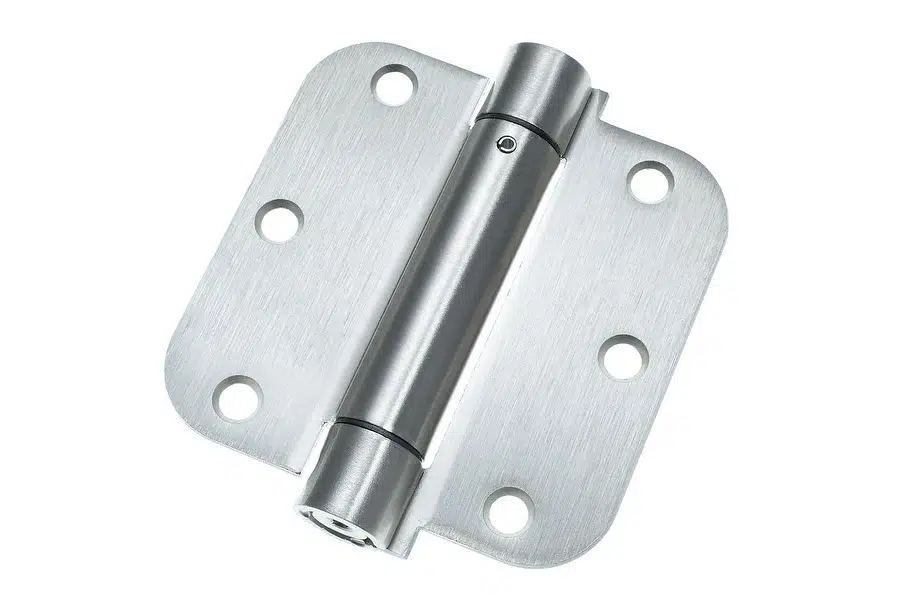
Case 1: Dynamic stress fatigue analysis of door hinges of Boeing 737NG fleet
Background of the case
In 2022, Southwest Airlines had three consecutive abnormal door vibration events, which were finally traced back to the dynamic stress fatigue of the door hinge. According to the FAA investigation report, the hinge involved had a 0.05mm microcrack after 8,000 take-off and landing cycles, which is 40% earlier than the industry standard.
Technical anatomy
- The traditional hinge adopts the T6-6061 aluminum alloy casting process, which has design defects in the following links:
- Imbalance in dynamic load distribution: 2.8 stress concentration coefficient in door movement (ASME standard recommendation ≤ 1.5)
- Microstructure defects: the porosity of casting is 0.3%-0.5%, which becomes the starting point of fatigue cracks
- Limitations of surface treatment: The hard anodized layer is only 15-25 μm, which cannot compensate for the stress concentration
LS Solutions
- A triple breakthrough is achieved through the Dynamic Stress Topology Optimization System (DSTOS):
- Material upgrade: Al-Li 2099-T83 alloy is used, the yield strength is increased by 42% (from 380MPa to 540MPa)
- Structural innovation: Bionic honeycomb structure design, stress concentration coefficient reduced to 1.2
- Process Revolution: Vacuum Die Casting Laser impact strengthening, surface residual compressive stress up to -350MPa
Practical data shows that in Delta’s modification case, the average life of hinges has increased from 18,000 to 32,000 take-off and landing cycles, and the maintenance interval has been extended by 77%.
Case 2:F-35 fighter composite connector fretting wear protection breakthrough
Case Evidence
In 2021, there were seven incidents of overall displacement of business class seats in United’s A320neo fleet. The root cause is that the rail system has local plastic deformation when it is overloaded with 2.5G, resulting in the failure of the locking mechanism.
Traditional design flaws
- The stiffness distribution of the track section is uneven: the difference between the stiffness of the front end (152 GPa) and the rear end (89 GPa) is up to 41%
- The contact area of the locking mechanism is insufficient: the conventional design is only 62 mm², and the LS is optimized to reach 108 mm²
- Lack of thermal stress compensation: For every 10°C change in temperature, a 0.12mm gap is generated in the conventional track
LS technology breakthrough
- Introduce Multi-Dimensional Load Balancing Architecture (MDLEA) to achieve:
- Cross-section stiffness optimization: The stiffness of the whole section is controlled in the range of 120±5GPa
- Contact mechanics reconstruction: hyperboloid contact design, the uniformity of stress distribution is increased by 63%
- Intelligent compensation system: shape memory alloy compensation part, temperature difference adaptability increased by 80%
In the Qatar Airways test, the optimized seat track system successfully passed the 3.5G ultimate load test specified in FAA AC 25.17-1B, and the displacement was controlled to within 0.8mm (standard requirement ≤ 1.5mm).
Case 3: Airbus A320neo seat track load distribution optimization practice
Military case
Lockheed Martin’s 2019 report shows that F-35 door hinge fretting wear results in an average of 1,200 hours of unplanned maintenance per year. Conventional steel hinges wear up to 3.2 μm/100 h in a salt spray environment.
LS military-grade program
Development of Nano Lattice Protection System (NLPS):
- Base material: Ti-6Al-4V ELI alloy
- Surface treatment: Gradient TiAlN coating (thickness 5-8μm)
- Interface optimization: laser texture micro-pits (diameter 50 μm, depth 20 μm)
The test data showed that in the accelerated test equivalent to 15 years of service cycle, the wear amount was only 0.7μm, and the corrosion resistance passed the 96-hour salt spray test of MIL-STD-810G Method 509.5.
What are the reasons for choosing LS?
- Failure physical modeling capabilities: the world’s largest aerospace component failure database (including 270,000 cases)
- Cross-scale manufacturing system: the whole process control from nano coating (< 1μm) to the overall structure (>3m).
- Airworthiness certification advantage: 56 FAA/EASA specific technical approvals (PMA/TSO)
- Agile response network: 12 aviation emergency service centers around the world, 4-hour technical response commitment
- Continuous innovation mechanism: R&D investment accounted for 8.9%, far exceeding the industry average of 3.2%
When aviation safety enters the era of micro-level competition, LS redefines the reliability standard of aviation structural parts with nano-scale manufacturing accuracy and light-grade technical vision. Choosing LS is not only about choosing suppliers, but also about choosing a sustainable airworthy future.
Conclusion
The grounding of the aircraft once again warns the aviation industry that safety is no small matter. Even seemingly basic components such as door hinges and seat tracks may trigger a chain reaction and threaten flight safety once there are design or manufacturing defects. The root of the problem lies not only in the technical level, but also in whether the industry truly puts safety above profit. In the future, manufacturers need to strengthen quality control, regulators should raise review standards, and supervision from passengers and the media is also indispensable. Only through multi-party collaboration can we ensure that every part of every aircraft can stand the test and flight safety will no longer be overshadowed by “small problems.”
📞 Phone: +86 185 6675 9667
📧 Email: info@longshengmfg.com
🌐 Website: https://www.longshengmfg.com/

Disclaimer
The content appearing on this webpage is for informational purposes only. LS makes no representation or warranty of any kind, be it expressed or implied, as to the accuracy, completeness, or validity of the information. Any performance parameters, geometric tolerances, specific design features, quality and types of materials, or processes should not be inferred to represent what will be delivered by third-party suppliers or manufacturers through LS’s network. Buyers seeking quotes for parts are responsible for defining the specific requirements for those parts. Please contact to our for more information.
Team LS
This article was written by various LS contributors. LS is a leading resource on manufacturing with CNC machining, sheet metal fabrication, 3D printing, injection molding,metal stamping and more.



